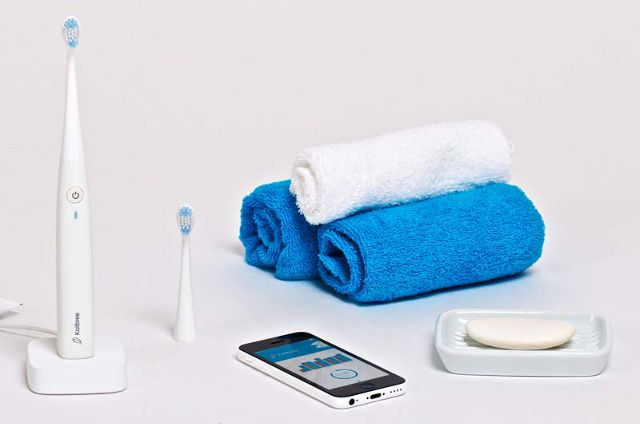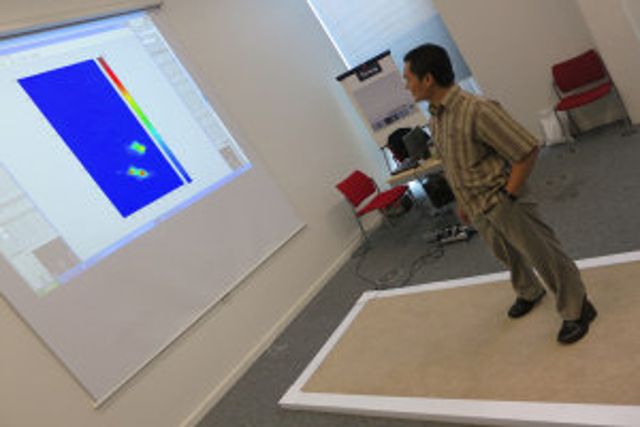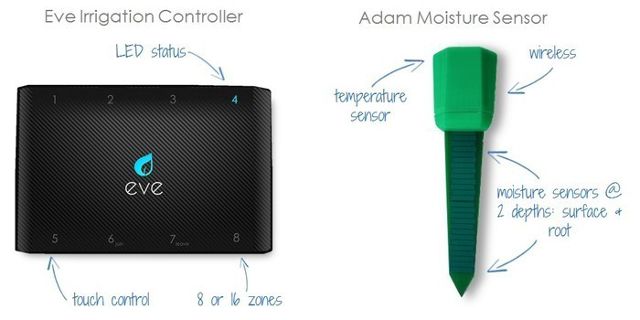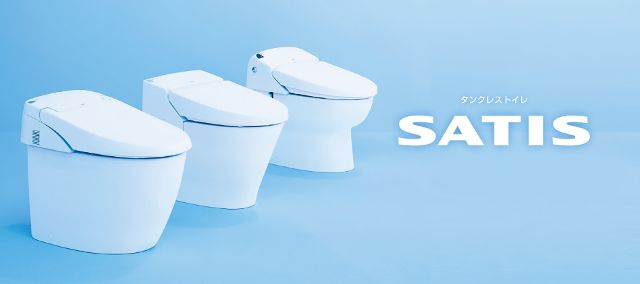The world of smart home technology is growing rapidly -- we've already profiled smart locks, smart lamps, and a variety of other smart home appliances. But these are all of the things that you'd expect from a smart home: appliances, electronics, and things that make your life easier. But what else is out there? Here are five smart products that you probably had no idea were out there.
Kolibree, the Smart Toothbrush
Your toothbrush is probably one of the lowest-tech items that you own. Even if you have an electric toothbrush, its most complex electronics are a motor and a timer. But Kolibree, a French company, is aiming to change that with the release of their connected toothbrush. What could a smart toothbrush possibly do? You might be surprised: it has interesting functions for the whole family when you pair it with your iPhone or Android.
For example, there are a number of games that your kids can play on the phone while they're brushing: the Kolibree website shows a Temple Run-like app in which kids can move their character left and right to collect coins by changing the orientation of the toothbrush. As kids learn to better brush their teeth, they can collect more coins for more rewards (though what those rewards are remains to be seen).
Whether they admit it or not, many adults will enjoy the kids' games as well, but there are more monitoring functions that are aimed at older users of the toothbrush, like the ability to track your brushing times and zones and get dental health tips. It may be able to report directly to your dentist in the future, too.
The Kolibree hasn't been released yet, but you can pre-order one through the Kolibree Kickstarter. You can get an early bird toothbrush in white for $99 (there's one left at the time of this writing), a standard one in white for $129, or a standard one in white, grey, pink, or blue for $149. Don't wait to wait? You can try these five dental health apps for free.
Want something a little less high-tech? Check out these electric toothbrushes under $100.
Kuaisou, Baidu's Smart Chopsticks
It sounds like an April Fool's joke -- and it was one. Until people started showing a lot of interest in the idea and Baidu started taking it seriously.
The as-yet-unnamed product is still a prototype, but what we've learned so far is quite interesting. Because of the many food-safety concerns in China, these chopsticks will interface with a mobile app and tell the user whether or not their food is safe to eat. Their main function seems to be detecting unhealthy oils used to cook foods; oil recycling is often used in China to reduce the costs related to food preparation, but can pose serious health risks.
The app will show a warning if the oil is unsafe to eat, or give the user a green light to go ahead if it's safe. They're also rumored to measure temperature, pH levels, and calories (though it's difficult to imagine how they could accurately calculate caloric information).
Pricing and release information isn't out yet, but it's a safe bet that these will be by far the most expensive chopsticks that you've ever considered buying.
University of Manchester's "Magic Carpet"
A team at the University of Manchester developed a fiber-optic underlay that can be retrofitted to the carpets in a house, turning the entire floor into a sensor. What does it do? According to Manchester's website, "These signals can then be analysed to show the image of the footprint and identify gradual changes in walking behaviour or a sudden incident such as a fall or trip. They can also show a steady deterioration or change in walking habits, possibly predicting a dramatic episode such as a fall."
While this may not seem like something you'd be interested in using, it could be of great use to places like retirement homes, hospital wards, and assisted living communities. Physical therapists could use it to make accurate measurements of their patients' gaits. The technology may also allow for the detection of chemical signatures or serve as an early-warning fire system as well.
While there aren't any signs of the technology being commercialized in the near future, there's a clear market for this sort of technology, and it's easy to imagine the sorts of things it could lead to in the future: intruder detection systems, better home monitoring, replacing fire or carbon monoxide detectors (even the current smart option, the Nest Protect), and so on. Unfortunately, there are no indications that travel by magic carpet will be among the features.
Adam and Eve, the Smart Sprinkler System
Have you ever thought that watering your lawn was far too complicated? No? Well, someone has. And that someone was probably involved in the creation of this two-part smart sprinkler system. Eve, the system controller, stays in your house. A number of moisture sensors, called Adams, are placed around your yard and report back to Eve about how much moisture is in the soil, both at top level and at root level.
When the soil needs watering, Eve turns the sprinkler on. You'll avoid over-watering, under-watering, and watering when it rains. Even will even connect to your SmartThings Hub to check the weather forecast to optimize the watering schedule (including skipping the watering altogether if it looks very likely to rain).
The sprinkler system pairs with your smartphone, letting you control Eve while you're on the move, though it's unclear exactly what you can do from your phone. However, the people behind the system say that there's potential for saving up to 60 percent of your lawn-watering expenditure with the system, and that it could pay for itself in less than a year.
How much does it cost? Getting an Eve and a SmartThings Hub will set you back $220, and getting both plus an Adam costs $295. Extra Adams can be purchased for $50 each. According to the Kickstarter page, they should start shipping very soon.
LIXIL's Satis Smart Toilet
Of course, no list of interesting smart things is complete without LIXIL's Satis smart toilet. After installing the toilet, the user needs to pair a cell phone via Bluetooth and download an app. Once the app is downloaded, it can be used to raise, lower, or heat the toilet seat; activate the bidet or blowdryer; flush; clean; or play music through the built-in speakers. Unfortunately, there appears to be no "save dropped cell phone" function.
If you're planning on going out to buy the toilet immediately, you might want to reconsider: it'll set you back about $2400 (in case you haven't done much toilet shopping, it shouldn't be too hard to find a standard toilet for around $200-300). You may also want to think about the possibility that even a smart toilet can be hacked, potentially running up your water bill (or scaring the crap out of you by turning on the bidet when you're not expecting it).
What's Next?
With smart toothbrushes, chopsticks, carpets, sprinkler systems, and toilets, it's clear that there's nothing that people won't try to make smarter. If you want to see more cool things for your smart home, check out this list of 6 smart home products you should be backing on Kickstarter. And if you don't want to wait that long, why not take on a smart home project of your own?
What do you think of these smart gadgets? Would you use them to make your home smarter? What do you think we'll see next? Share your thoughts and predictions below!
Image credits: Happy young woman eating sushi in a restaurant and holding mobile phone via Shutterstock (edited)





